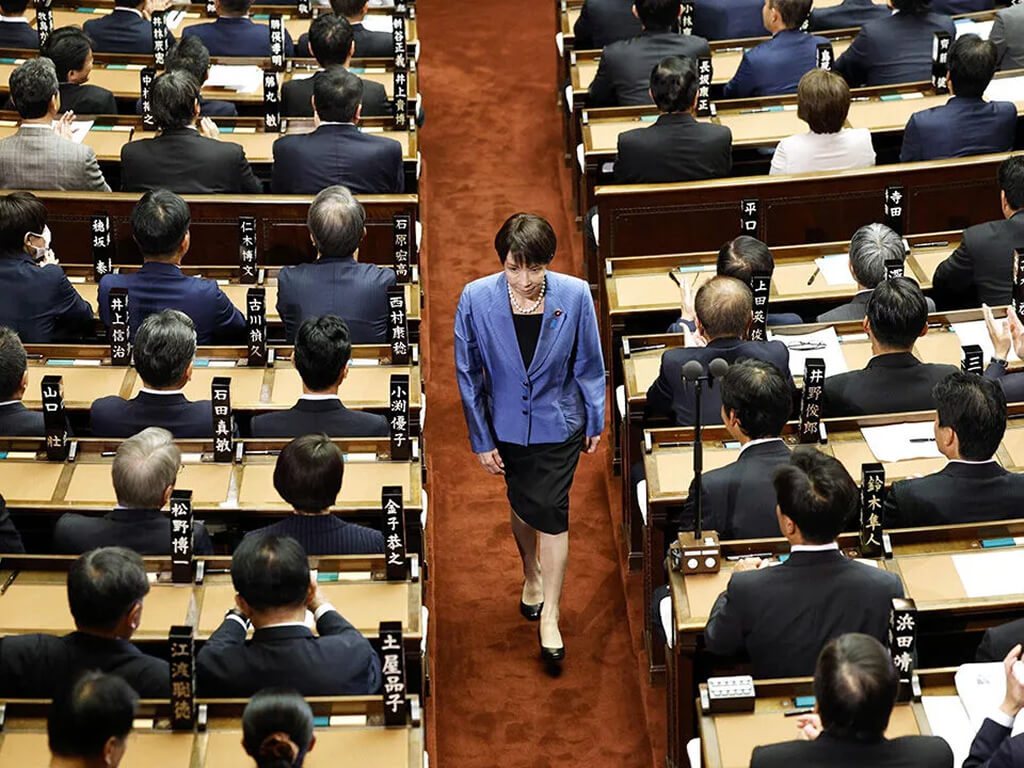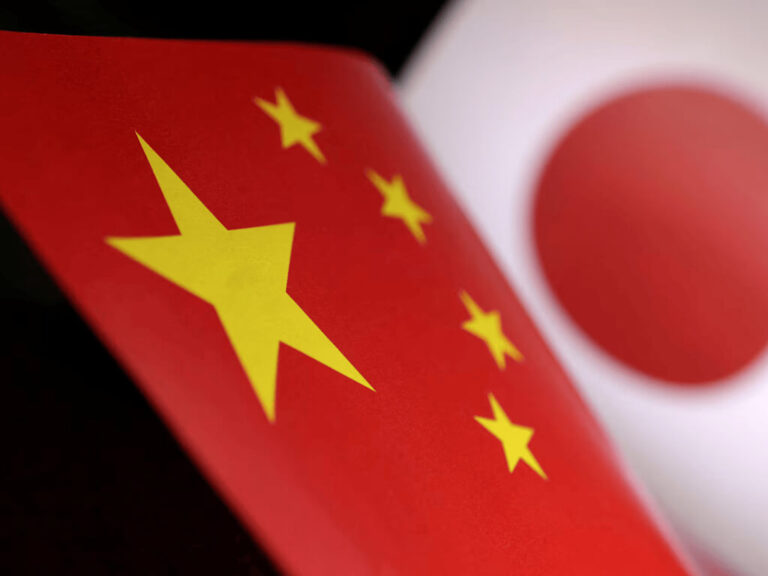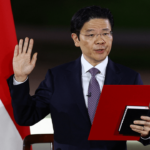Japan has cycled through a series of short-lived Liberal Democratic Party governments in recent years, each struggling to address the nation’s deepening economic and demographic challenges. Now, the country is turning to a new leader. For the first time in its history, Japan has a woman serving as prime minister.
Sanae Takaichi arrives in office with a reputation as a tough conservative, drawing comparisons to Margaret Thatcher and Italy’s Giorgia Meloni. Confident and assertive from the start, she made her message clear during a leadership debate when candidates were asked to offer a few words in English.
“Japan is back,” she said.
New Government and New Coalition
On Tuesday, October 21, Sanae Takaichi made history as Japan’s first female prime minister. She secured 237 votes in the 465-seat lower house and won similar support in the upper house. Her rise came after the Liberal Democratic Party, which has led the country for most of the postwar era, lost its longtime coalition partner Komeito.
Without a majority in either chamber, the LDP struck a deal with the right-leaning Japan Innovation Party, known as Nippon Ishin. The agreement provided Takaichi the votes she needed to take office, but only after intense negotiations, highlighting the fragile nature of her mandate.
Takaichi moved quickly to appoint a 19-member cabinet, naming Satsuki Katayama as Japan’s first female finance minister. She has pledged to deliver “Nordic” levels of female representation, yet only two women hold cabinet posts so far, falling short of her own promises. She also brought two rivals from the LDP leadership race into senior positions, appointing Toshimitsu Motegi as foreign minister and Shinjirō Koizumi as defense minister.
Strong Conservative figure
The 64-year-old has long pursued Japan’s top job. Her rise marks a notable comeback after losing last year’s leadership race to former prime minister Shigeru Ishiba. Her second bid briefly faltered when she drew backlash for an unsubstantiated claim that foreign visitors were harming the “sacred” deer in Nara, the district she has represented since 1993.
Takaichi is among the most outspoken conservatives in the Liberal Democratic Party and shares an ideological lineage with former prime minister Shinzo Abe, who was assassinated in 2022. Like her mentor, she takes a revisionist view of Japan’s wartime history and seeks to amend the postwar constitution to formally recognize the Self Defense Forces as a military. Such a change would likely heighten regional tensions.
She has adopted a tough stance on China and makes regular visits to Yasukuni Shrine in Tokyo, where Japan’s war dead are honored. On social issues, she holds firmly traditional views. She opposes same-sex marriage and resists proposals to allow married couples to keep separate surnames, a popular reform she argues would weaken family bonds. She has also rejected calls to permit women to ascend the imperial throne, despite the shortage of male heirs.
Abe’s imprint is visible in her economic agenda. Takaichi supports aggressive public spending to stimulate the world’s fourth-largest economy. She has softened earlier talk of renegotiating trade terms with the United States, aiming to maintain smooth relations ahead of her first meeting with President Donald Trump in Tokyo next week.
Challenges Await Her
When Takaichi won the LDP presidency earlier this month, she inherited a fractured party weakened by a long-running funding scandal and declining public trust. The LDP, which has dominated Japanese politics for most of the postwar era, no longer holds a majority in either chamber of parliament.
Her runoff victory on October 4 over the more centrist Shinjiro Koizumi signaled a resurgence of the party’s conservative wing after a year of frustration under former leader Shigeru Ishiba. Takaichi and her allies believe they can restore support by addressing voter concerns early, particularly on immigration.
Migration was the centerpiece of her leadership bid. In her most important speech, she devoted more than half her remarks to calling for stricter border controls, limits on foreign property purchases, and tougher enforcement against illegal immigration. Her stance mirrors that of her new coalition partner, the Japan Innovation Party, and is aimed at winning back voters who drifted to newer right-leaning parties such as Sanseito.
The coalition with the Japan Innovation Party is widely seen as a marriage of convenience, uniting supporters of higher defense spending, constitutional revision, and tighter immigration rules. Yet the partnership also contains real tensions on economic policy. Senior LDP members are expected to resist many of Ishin’s top demands, including cutting the number of lower house seats by ten percent, suspending the consumption tax on food, and banning corporate donations.
“I’m very much looking forward to working with you on efforts to make Japan’s economy stronger and to reshape Japan as a country that can be responsible for future generations,” Takaichi said to Ishin co-leader Hirofumi Yoshimura as the coalition agreement was signed.
The Japan Innovation Party hopes that its role in government will boost its national reach beyond its Osaka stronghold. But voters have shown a willingness to turn against those in power. With Japan facing serious economic and political pressures, both coalition parties risk backlash if progress is slow.
Takaichi has taken a cautious approach to some of her most controversial positions. She avoided mentioning constitutional revision in her early speeches and skipped a visit to Yasukuni Shrine during the autumn festival to avoid provoking China. Meanwhile, the LDP’s longtime partner Komeito walked away from the coalition after more than twenty-five years, citing divisions on national security and dissatisfaction with the funding scandal response.
That departure left Takaichi short of a secure majority. Even with Ishin’s support, the coalition remains two seats below the threshold needed to pass legislation independently. To advance budgets and other key bills, she will need backing from lawmakers outside the government.
It is a stark reminder that the first woman to lead Japan takes office with a historic title, but a far-from-solid political footing.
No Honeymoon for Takaichi
Shigeru Ishiba had little time before facing challenges from within the party, the government, and the public. The same is likely to hold true for Takaichi.
Her immediate agenda focuses on addressing the cost-of-living crisis and rising concerns over migration. For most ordinary Japanese, the priority is policies that ease economic pressures, and failure to act could undermine her support.
Takaichi leads a minority government that must rely on opposition lawmakers to pass budgets and other major legislation. Her push for tax cuts and increased spending to reduce the cost of living could clash with her smaller coalition partner, Ishin, which favors limited government. At the same time, her tougher stance on immigration may attract support from the right as Japan faces record numbers of migrant workers and tourists. With a government lacking a majority, a united opposition could make her political position precarious.
Her diplomatic skills will also be tested next week during a two-day visit to Tokyo by Donald Trump. She will then make her international debut at the APEC summit in South Korea.
There are some early positives. The Tokyo Stock Exchange responded favorably to her appointment, reflecting optimism about her support for expansive fiscal policies and monetary easing measures. The Nikkei stock index closed Tuesday at an all-time high above 49,000 points amid expectations of greater stability in Japan’s domestic political situation.
By law, Takaichi does not need to call another general election until autumn 2028. Nevertheless, she faces a difficult road ahead, balancing her historic achievement with fragile political realities.








